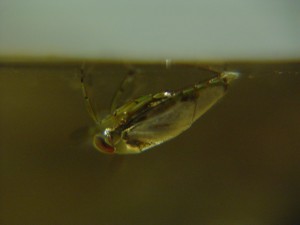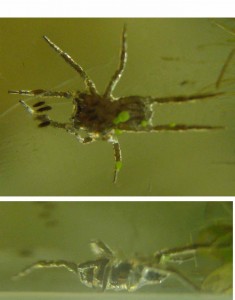The rough, hairy surfaces of many insects and spiders serve to render them water-repellent, allowing them to walk on water and survive in case of accidental submergence. Most such creatures take in oxygen through spiracles on their body cavity. We explore here the manner in which some creatures have adapted to life below the interface, surviving by virtue of a thin air layer trapped along their exteriors. The diffusion of dissolved oxygen from the ambient water may allow this layer to function as a respiratory bubble or ‘plastron’, and so enable certain species to remain underwater indefinitely. Images of plastrons on a submerged waterboatman and spider are provided below. By coupling the bubble mechanics, surface and gas-phase chemistry, we enumerate criteria for plastron viability and thereby deduce the range of environmental conditions and dive depths over which plastron breathers can survive. The results of our study are reported in Flynn & Bush (2008).
SELECTED PRESS:
New York Times
Science News
Boston Globe
``Errors like straws upon the surface flow: Who would search for pearls must dive below.”
– John Dryden


